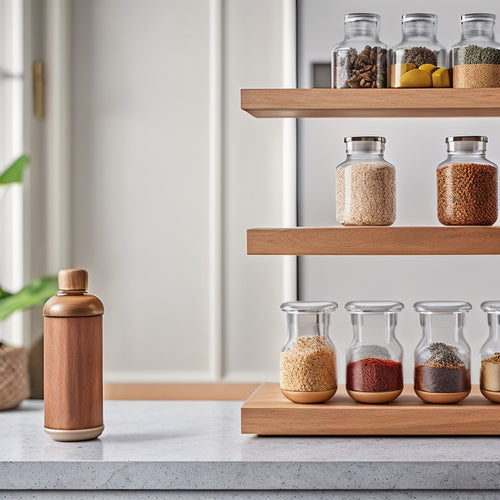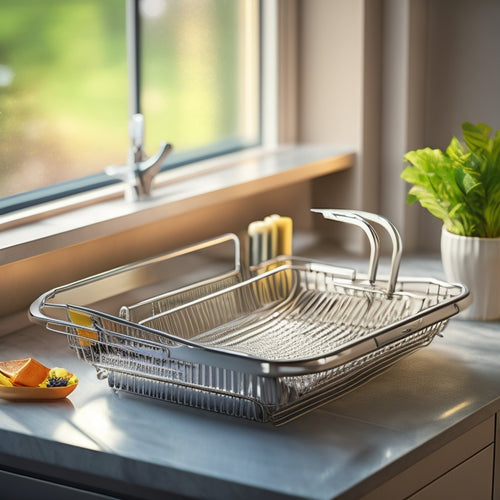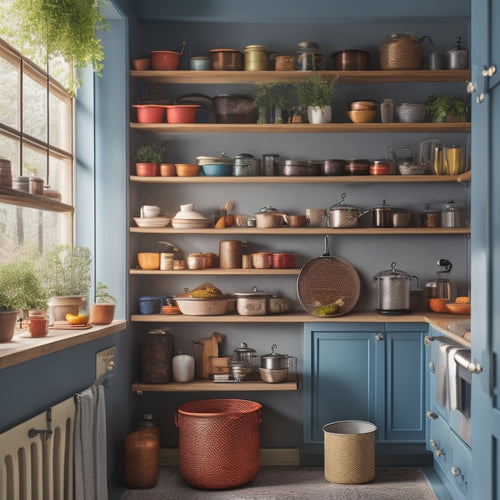
Crucial Steps for Safe Food Handling
Share
Safe food handling practices are important in preventing foodborne illnesses. Understanding the sources of contamination, including unclean hands and tainted water, is crucial. Safe preparation involves thorough cooking, proper ingredient handling, and handwashing before cooking or eating. Proper storage techniques, such as using covered containers and controlling temperatures, are also necessary. Food vendors must adhere to hygiene standards, including regular handwashing and using clean utensils. By avoiding common mistakes, such as cross-contamination and improper storage, consumers can greatly reduce the risk of foodborne illnesses. To ensure a thorough approach to safe food handling, it's vital to consider these key factors and more.
Key Takeaways
• Wash hands thoroughly before handling food to prevent contamination from unclean hands.
• Separate raw and cooked foods to prevent cross-contamination and foodborne illness.
• Cook food to specific internal temperatures to ensure thorough cooking and kill harmful germs.
• Store food in covered containers at safe temperatures, such as refrigeration or freezing, to prevent spoilage.
• Implement proper utensil and surface cleaning and sanitation to prevent the spread of harmful germs.
Understanding Food Contamination Sources
Food contamination can occur through various sources, including unclean hands, flies, utensils, and tainted water, which can introduce harmful germs into the food chain. Germ transmission is a significant concern, as it can lead to foodborne illnesses.
Tainted water, in particular, is a common source of food contamination, as it can harbor harmful bacteria, viruses, and parasites. When used for cooking, washing, or preparing food, tainted water can spread germs and cause illness. It is essential to understand these sources of contamination to take necessary precautions and prevent the spread of germs.
Safe Food Preparation Essentials
Thorough cooking and proper handling of ingredients are critical components of safe food preparation, as they can greatly reduce the risk of foodborne illnesses. Handwashing is essential before cooking or eating, using treated water and soap to eliminate germs.
Cleaning utensils and kitchen surfaces with treated water and soap is also crucial to prevent cross-contamination. Cooking temperatures must be sufficient to kill harmful bacteria, with a minimum internal temperature of 165°F (74°C) for poultry and 145°F (63°C) for beef, pork, and lamb.
Proper Food Storage Techniques
Effective storage of cooked and uncooked food is necessary in preventing contamination and guaranteeing the safety of consumed food. Proper food organization is critical, where uncooked food should be stored in inaccessible containers to prevent cross-contamination.
Cooked food should be stored in covered containers, kept away from dirt and insects, and consumed promptly to avoid spoilage. Temperature control is also important, as refrigeration at 40°F (4°C) or below and freezing at 0°F (-18°C) or below can slow down bacterial growth.
Additionally, storing food at room temperature for extended periods should be avoided. By following these guidelines, individuals can greatly reduce the risk of foodborne illnesses and maintain a safe and healthy food supply.
Ensuring Hygiene at Food Vendors
When purchasing food from vendors, it is important to make sure that they maintain good hygiene practices to prevent the spread of foodborne illnesses. Confirming vendor cleanliness is essential, as contaminated food can lead to serious health issues.
Here are some key aspects to look out for:
-
Check if vendors wash their hands regularly and use clean utensils and equipment.
-
Confirm that food is stored in clean and covered containers to prevent insect prevention and contamination.
-
Verify that vendors use treated water for preparing drinks and ice to prevent waterborne illnesses.
- Look for signs of pest control measures, such as mosquito netting or inverted bowls, to prevent contact with flies and other insects.
Avoiding Common Food Safety Mistakes
Many people unintentionally compromise food safety by neglecting simple yet essential practices, leading to a notable risk of foodborne illnesses. One common mistake is failing to prevent cross contamination, which can happen when raw meat, poultry, or seafood come into contact with ready-to-eat foods.
To avoid this, separate raw and cooked foods during storage, preparation, and cooking. Additionally, guarantee hygienic food handling by washing hands frequently, using clean utensils and surfaces, and cooking food to the recommended internal temperature.
Key practices include storing food at safe temperatures, refrigerating perishable items promptly, and discarding expired or spoiled food. By being mindful of these common mistakes, individuals can markedly reduce the risk of foodborne illnesses and ensure a safe food handling environment.
Frequently Asked Questions
Can I Use Bleach to Wash Fruits and Vegetables?
When washing fruits and vegetables, avoid using bleach, as it can leave toxic residues. Instead, opt for bleach substitutes like vinegar or baking soda, and employ proper rinsing techniques to guarantee effective removal of dirt and bacteria.
How Do I Know if My Water Is Treated and Safe for Cooking?
'To guarantee water safety, conduct regular water testing and consider filtration methods. Alternatively, boil water for at least one minute to purify it, making it suitable for cooking and consumption.'
What Is the Safe Minimum Cooking Temperature for Poultry?
For poultry safety, proper temperature monitoring is important. According to poultry safety guidelines, guarantee internal temperatures reach a minimum of 165°F (74°C) to eliminate harmful bacteria and prevent foodborne illnesses.
Can I Eat Food That's Been Left in the Refrigerator for a Week?
Ironically, the temptation to devour a week-old refrigerator relic is strong, but beware: moldy leftovers and expired products can harbor harmful bacteria, making it a ticking time bomb for foodborne illnesses.
How Often Should I Clean My Refrigerator and Freezer?
Regular maintenance of refrigerators and freezers is essential to preventing contamination. Clean them every 1-2 months to remove spills, wipe down shelves, and check expiration dates to guarantee a safe food storage environment.
Related Posts
-

Modern Countertop Spice Organizer Designs
Modern countertop spice organizer designs enhance your kitchen's aesthetics while maximizing functionality. These spa...
-

Rust-Resistant Dish Drainers for Long-Lasting Use
If you're looking for rust-resistant dish drainers, focus on materials like high-grade stainless steel for superior c...
-

Best Vertical Storage Solutions for Small Kitchens
In a small kitchen, vertical storage solutions are your secret weapon to maximize every inch of space and keep your c...


